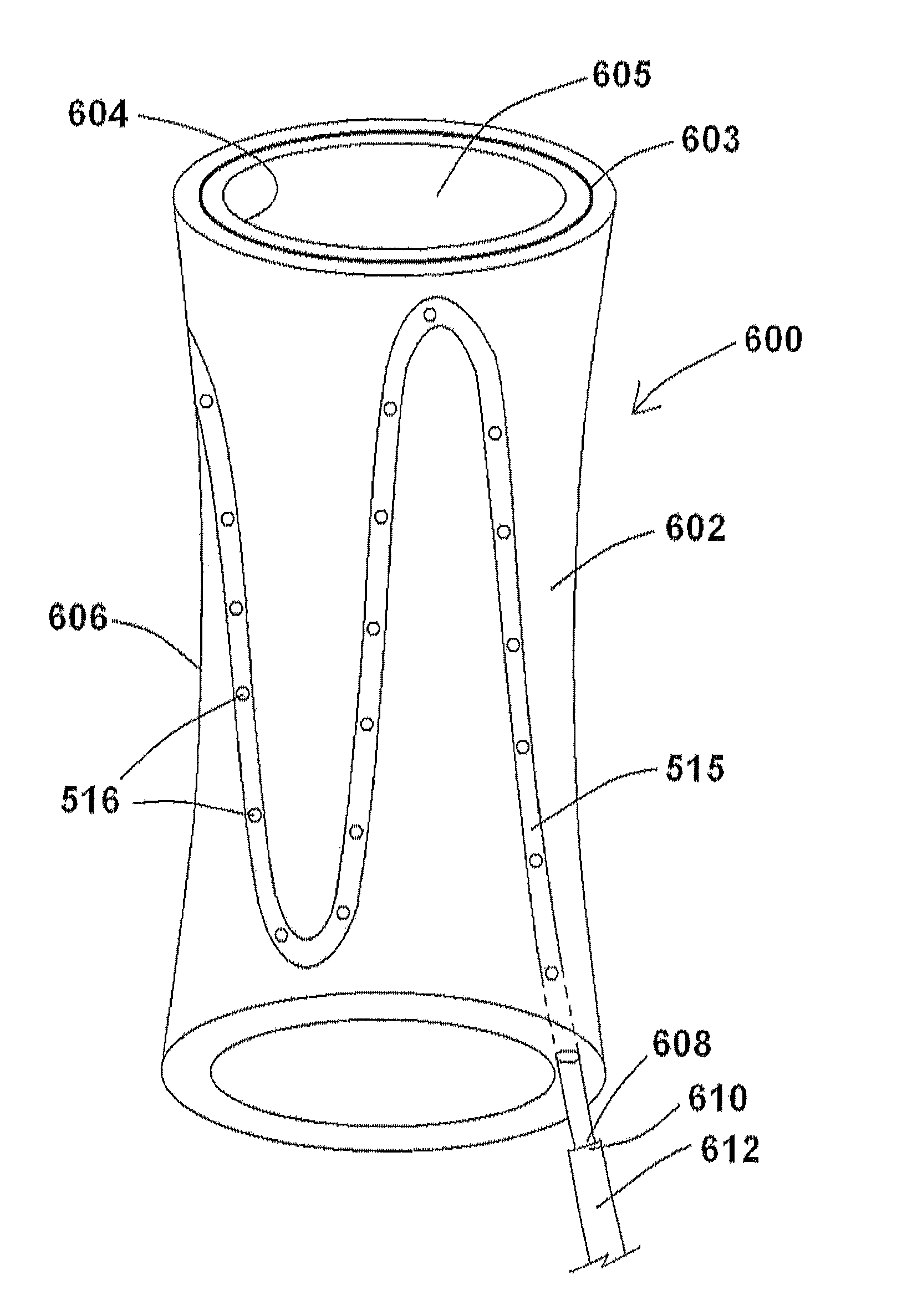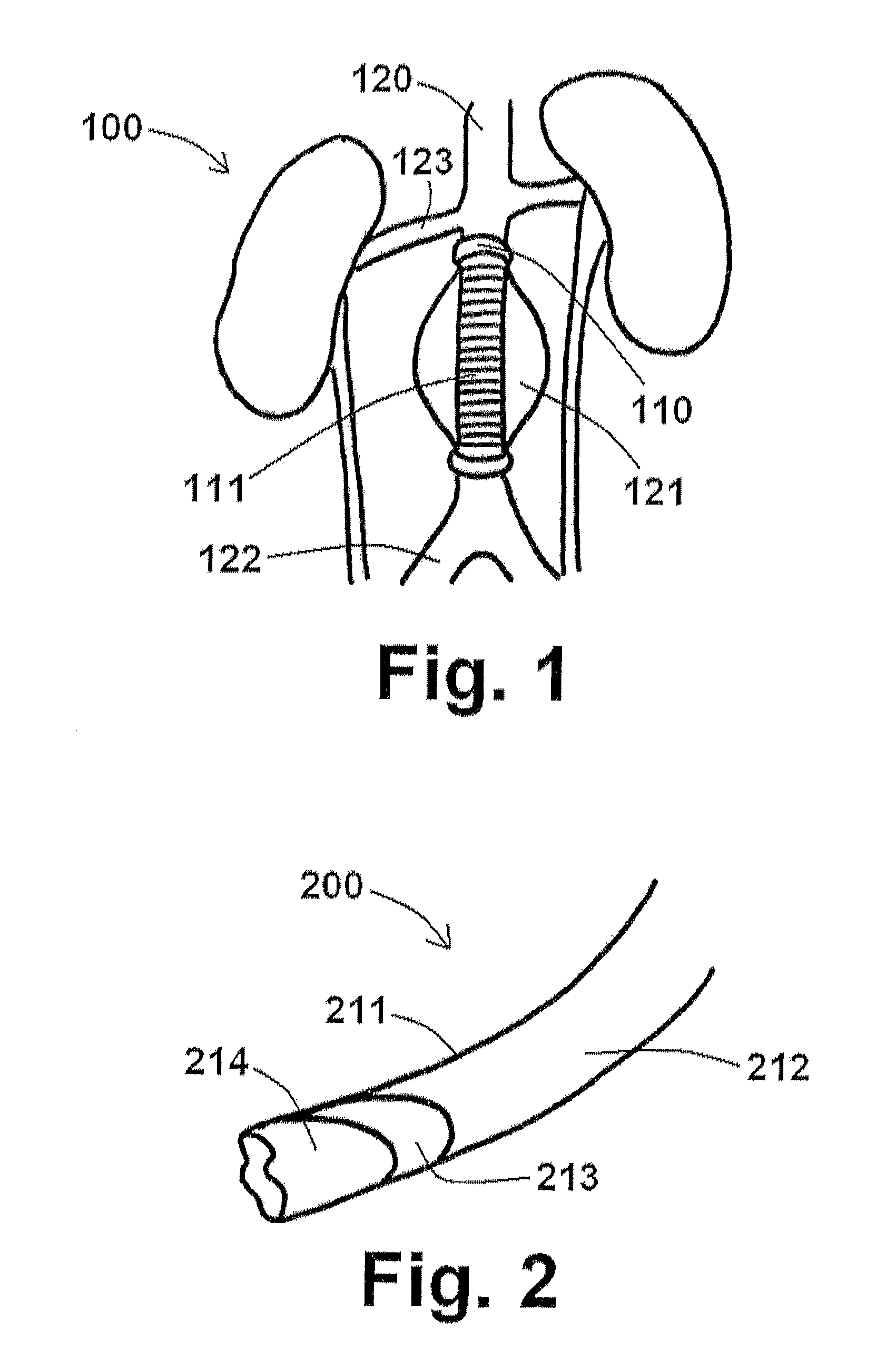Endoprosthesis assemblies and methods for using the same
a technology of endoprosthesis and assembly, which is applied in the field of tissue support, can solve the problems of prone to such fatal problems and inadequate current evar devices and methods, and achieve the effect of minimizing and/or preventing the growth or rupture of aneurysms
- Summary
- Abstract
- Description
- Claims
- Application Information
AI Technical Summary
Benefits of technology
Problems solved by technology
Method used
Image
Examples
Embodiment Construction
[0059]The disclosure of the present application provides various endograft and endoprosthesis devices and methods for using the same. For the purposes of promoting an understanding of the principles of the present disclosure, reference will now be made to the embodiments illustrated in the drawings, and specific language will be used to describe the same. It will nevertheless be understood that no limitation of the scope of this disclosure is thereby intended.
[0060]As discussed briefly above, the aneurysm size appears to be the one of the most important factors determining risk of aneurysm rupture. Changes in aneurysm dimension have been used as a surrogate marker for clinical efficacy after endovascular repair. Other morphological changes, including progressive angulation, and aortic neck enlargement, may occur in response to either aneurysm exclusion or associated degenerative changes in adjacent segments, respectively. In endovascular repair, the aneurysm sac is left intact and, ...
PUM
 Login to View More
Login to View More Abstract
Description
Claims
Application Information
 Login to View More
Login to View More - R&D
- Intellectual Property
- Life Sciences
- Materials
- Tech Scout
- Unparalleled Data Quality
- Higher Quality Content
- 60% Fewer Hallucinations
Browse by: Latest US Patents, China's latest patents, Technical Efficacy Thesaurus, Application Domain, Technology Topic, Popular Technical Reports.
© 2025 PatSnap. All rights reserved.Legal|Privacy policy|Modern Slavery Act Transparency Statement|Sitemap|About US| Contact US: help@patsnap.com



